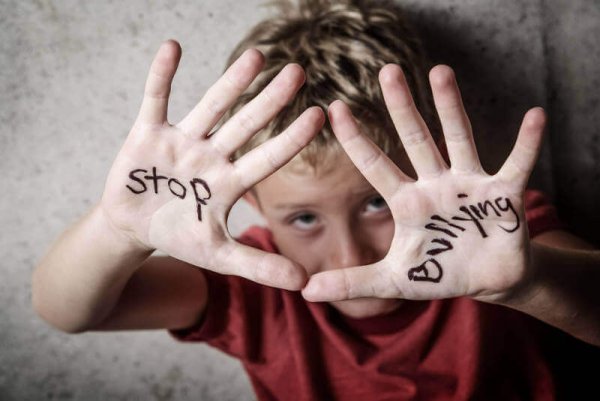Social and Emotional Learning Can Help Prevent Bullying

Parents and teachers are often unaware of just how serious bullying can be and the devastating consequences it can have. Research suggests that we need a systemic approach to effectively address bullying and associated behaviors and prevent them. Social and emotional learning (SEL) programs can be an effective way to reduce the likelihood of bullying. This is because SEL promotes skills, behaviors, attitudes, and environmental factors that are incompatible with bullying and other forms of negative peer interaction.
Research has shown that social and emotional learning programs are an effective component in comprehensive bullying prevention initiatives. This is in addition to those that target other problems, such as substance abuse. SEL programs improve student skills, reduce problematic behavior, and improve academic achievement.
“Social emotional learning (SEL) is a structured way to improve a wide range of students’ social and emotional competencies and impact bullying at the individual and peer levels of the school social-ecology”.
-Smith and Low (2013)-
Why do young people resort to bullying?
Children and adolescents resort to bullying because it’s a strategy that they think can help them meet their needs of social acceptance, self-confidence, respect, and security. On many occasions, their peers reinforce this behavior with their apparent approval. Thus, the verbal and physical aggression is maintained over time.
In addition, studies tell us that children and young people who have already been victims of bullying may resort to similar strategies. They often apply the same strategies in relationships where they’re in a dominant position (for example, with their younger siblings). Therefore, bullying can become a vicious cycle.
On the other hand, if you can encourage children and adolescents to communicate clearly about what’s really happening to them from an early age, then it’s very likely that you’ll be able to intervene before the problem becomes more serious.

Social and emotional learning for the prevention of bullying
Research indicates that bullying can’t thrive in a safe and humane learning environment characterized by:
- Supportive relationships between teachers and students and between students. Relationships that encourage open communication and positive ways of solving problems and conflicts.
- Good working relationships between schools and families that encourage two-way communication about student growth and development.
- School rules, values, and policies that emphasize respect for others and appreciation and understanding of differences.
Students with good emotional education don’t only demonstrate interest and concern for others. They also establish positive relationships, make responsible decisions, and handle challenging social situations in a constructive way.
Social and emotional learning programs ensure that these goals are met. In fact, research indicates that it’s a very effective tool.
Compared to control groups, students who participate in SEL programs demonstrate significant gains in social and emotional skills. In addition to this, they also show higher levels of prosocial behavior, more favorable attitudes towards school and other areas, and better academic achievement.
These results mean that social and emotional learning programs are associated with many positive benefits. Thus, their implementation and development generate the educational and social conditions that make bullying much less likely.
The importance of schools in the prevention of bullying
Bullying and other forms of social aggression and cruelty in schools won’t be eradicated with just anti-bullying campaigns. To change the bullying culture, along with the harassment and aggression that accompany it, schools must implement teachings that offer an alternative.
Bullying prevention begins with encouraging students to talk about their feelings in a safe and helpful language. Social skills won’t come from an occasional talk or meeting or after a bullying case has come to light. Social and emotional education should be an everyday occurrence, practiced on a daily basis.

Research shows that current bullying prevention programs aren’t working. Most are ineffective because they address the symptoms of bullying, not the underlying causes. They aren’t likely to address emotional intelligence issues, nor provide skills in understanding, communicating, and controlling feelings.
Emotional intelligence should be a central component of bullying prevention efforts from preschool classrooms right through to high school. However, the development of emotional intelligence is often absent from anti-bullying strategies.
What children and teenagers need is to be educated in emotional intelligence. This will help prevent children from resorting to bullying as a form of emotional release. And for situations when bullying is unavoidable, it’ll help both victims and bystanders develop the necessary skills to control fear and anxiety, communicate their needs, and gain support.
The good news is that emotional intelligence can be taught, just like math or reading. Schools can easily integrate it into the academic curriculum and improve the school climate as a result.
Parents and teachers are often unaware of just how serious bullying can be and the devastating consequences it can have. Research suggests that we need a systemic approach to effectively address bullying and associated behaviors and prevent them. Social and emotional learning (SEL) programs can be an effective way to reduce the likelihood of bullying. This is because SEL promotes skills, behaviors, attitudes, and environmental factors that are incompatible with bullying and other forms of negative peer interaction.
Research has shown that social and emotional learning programs are an effective component in comprehensive bullying prevention initiatives. This is in addition to those that target other problems, such as substance abuse. SEL programs improve student skills, reduce problematic behavior, and improve academic achievement.
“Social emotional learning (SEL) is a structured way to improve a wide range of students’ social and emotional competencies and impact bullying at the individual and peer levels of the school social-ecology”.
-Smith and Low (2013)-
Why do young people resort to bullying?
Children and adolescents resort to bullying because it’s a strategy that they think can help them meet their needs of social acceptance, self-confidence, respect, and security. On many occasions, their peers reinforce this behavior with their apparent approval. Thus, the verbal and physical aggression is maintained over time.
In addition, studies tell us that children and young people who have already been victims of bullying may resort to similar strategies. They often apply the same strategies in relationships where they’re in a dominant position (for example, with their younger siblings). Therefore, bullying can become a vicious cycle.
On the other hand, if you can encourage children and adolescents to communicate clearly about what’s really happening to them from an early age, then it’s very likely that you’ll be able to intervene before the problem becomes more serious.

Social and emotional learning for the prevention of bullying
Research indicates that bullying can’t thrive in a safe and humane learning environment characterized by:
- Supportive relationships between teachers and students and between students. Relationships that encourage open communication and positive ways of solving problems and conflicts.
- Good working relationships between schools and families that encourage two-way communication about student growth and development.
- School rules, values, and policies that emphasize respect for others and appreciation and understanding of differences.
Students with good emotional education don’t only demonstrate interest and concern for others. They also establish positive relationships, make responsible decisions, and handle challenging social situations in a constructive way.
Social and emotional learning programs ensure that these goals are met. In fact, research indicates that it’s a very effective tool.
Compared to control groups, students who participate in SEL programs demonstrate significant gains in social and emotional skills. In addition to this, they also show higher levels of prosocial behavior, more favorable attitudes towards school and other areas, and better academic achievement.
These results mean that social and emotional learning programs are associated with many positive benefits. Thus, their implementation and development generate the educational and social conditions that make bullying much less likely.
The importance of schools in the prevention of bullying
Bullying and other forms of social aggression and cruelty in schools won’t be eradicated with just anti-bullying campaigns. To change the bullying culture, along with the harassment and aggression that accompany it, schools must implement teachings that offer an alternative.
Bullying prevention begins with encouraging students to talk about their feelings in a safe and helpful language. Social skills won’t come from an occasional talk or meeting or after a bullying case has come to light. Social and emotional education should be an everyday occurrence, practiced on a daily basis.

Research shows that current bullying prevention programs aren’t working. Most are ineffective because they address the symptoms of bullying, not the underlying causes. They aren’t likely to address emotional intelligence issues, nor provide skills in understanding, communicating, and controlling feelings.
Emotional intelligence should be a central component of bullying prevention efforts from preschool classrooms right through to high school. However, the development of emotional intelligence is often absent from anti-bullying strategies.
What children and teenagers need is to be educated in emotional intelligence. This will help prevent children from resorting to bullying as a form of emotional release. And for situations when bullying is unavoidable, it’ll help both victims and bystanders develop the necessary skills to control fear and anxiety, communicate their needs, and gain support.
The good news is that emotional intelligence can be taught, just like math or reading. Schools can easily integrate it into the academic curriculum and improve the school climate as a result.
This text is provided for informational purposes only and does not replace consultation with a professional. If in doubt, consult your specialist.







